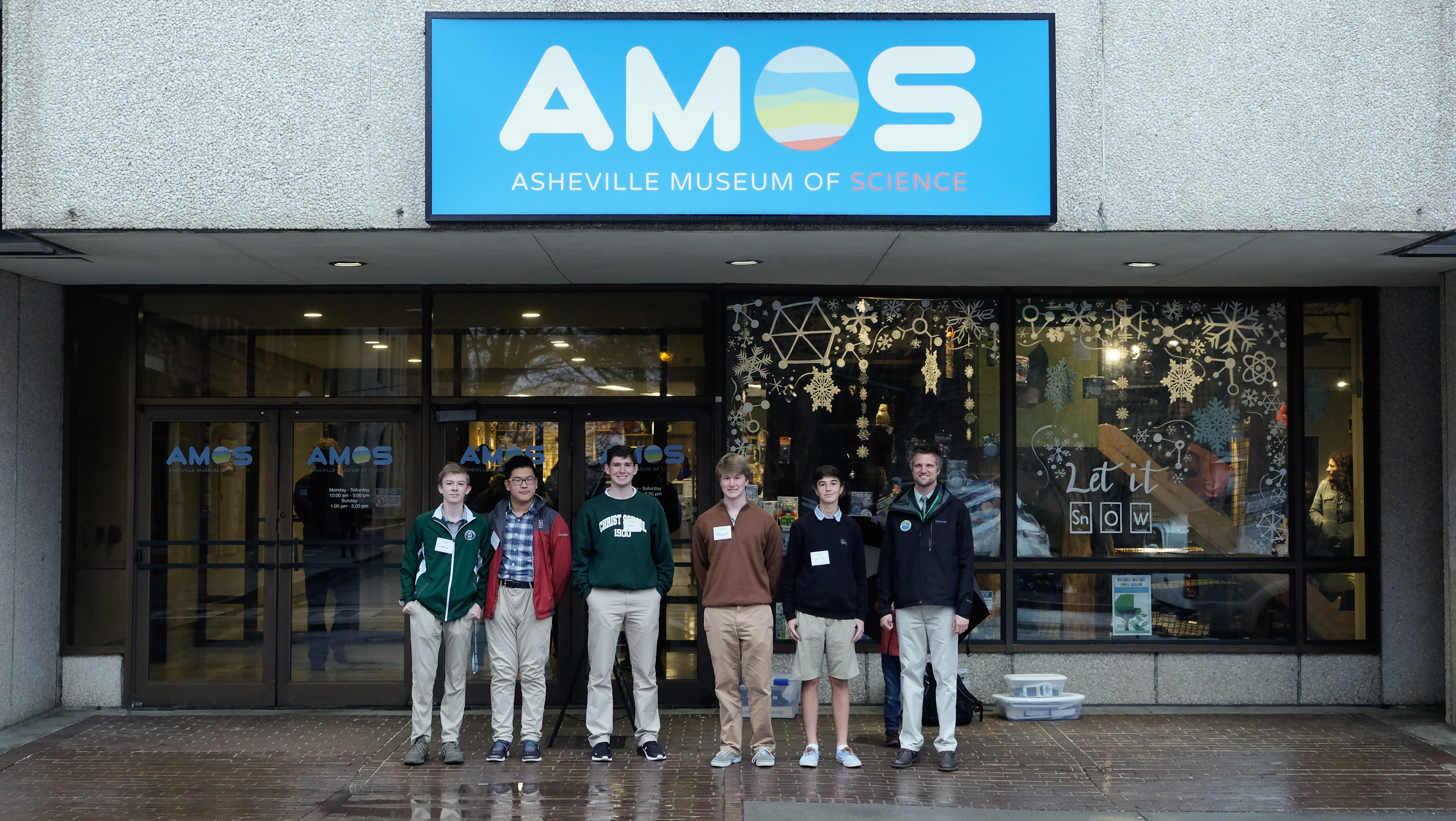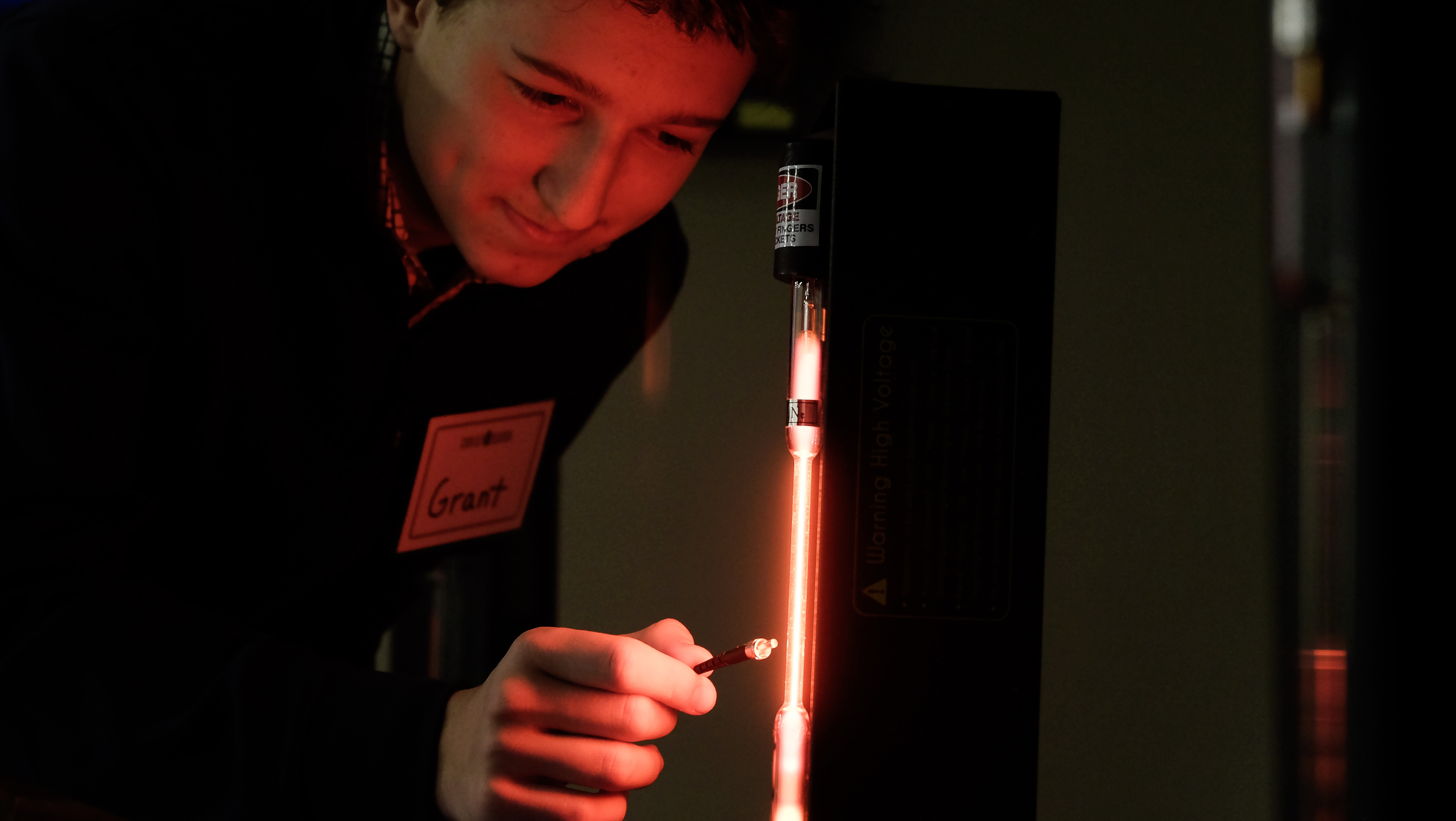Greenies Continue Science Outreach at Asheville Museum
Children wandering through the Asheville Museum of Science on Saturday were absorbing as much as they could.
Little did the kids know that a group of boys were just as eager to pass on what they have learned at Christ School.
For the second year in a row, Dr. Brent Harris and his Honors Chemistry students performed a service project at AMOS, which is in the heart of downtown Asheville. The Greenies led a two-hour program called "How Scientists See the Unseeable" with hands-on activities that mirror their classroom lab experiments.
"It's a great opportunity for the boys to learn by teaching," Harris said. "(AMOS) tries to get community scientists and schools to do these throughout the year. I don't do it, it's their service project. Last year, the museum wanted to keep one of my student's final projects (a periodic table by William David '21) which was exciting."
Clarke MacDonald '21, Grant Haldeman '21, Connor Jones '21, Luke Stone '21, Robert Dong '21, Wyatt Wilson '20, and McCauley Hardison '21 were the Greenies who shared their knowledge on Saturday with both high-tech and analog equipment. They were set up in the museum's STEM (Science, Technology, Engineering, and Mathematics) lab. Clarke documented the project with his photography.
The inspiration for "How Scientists See the Unseeable" came from recent breakthroughs which have allowed atoms and molecules to be seen like never before. The 2017 Nobel Prize in Chemistry went to three men – Jacques Dubochet, Joachim Frank, and Richard Henderson – for simplifying and improving the imaging of biomolecules.
Even without visible proof, chemists have known about the existence of atoms and molecules since the early 1800s.







